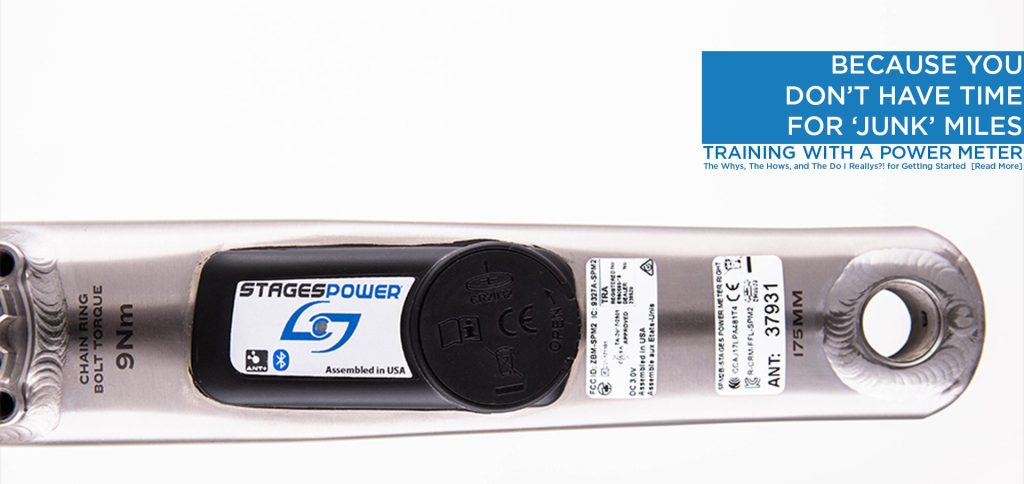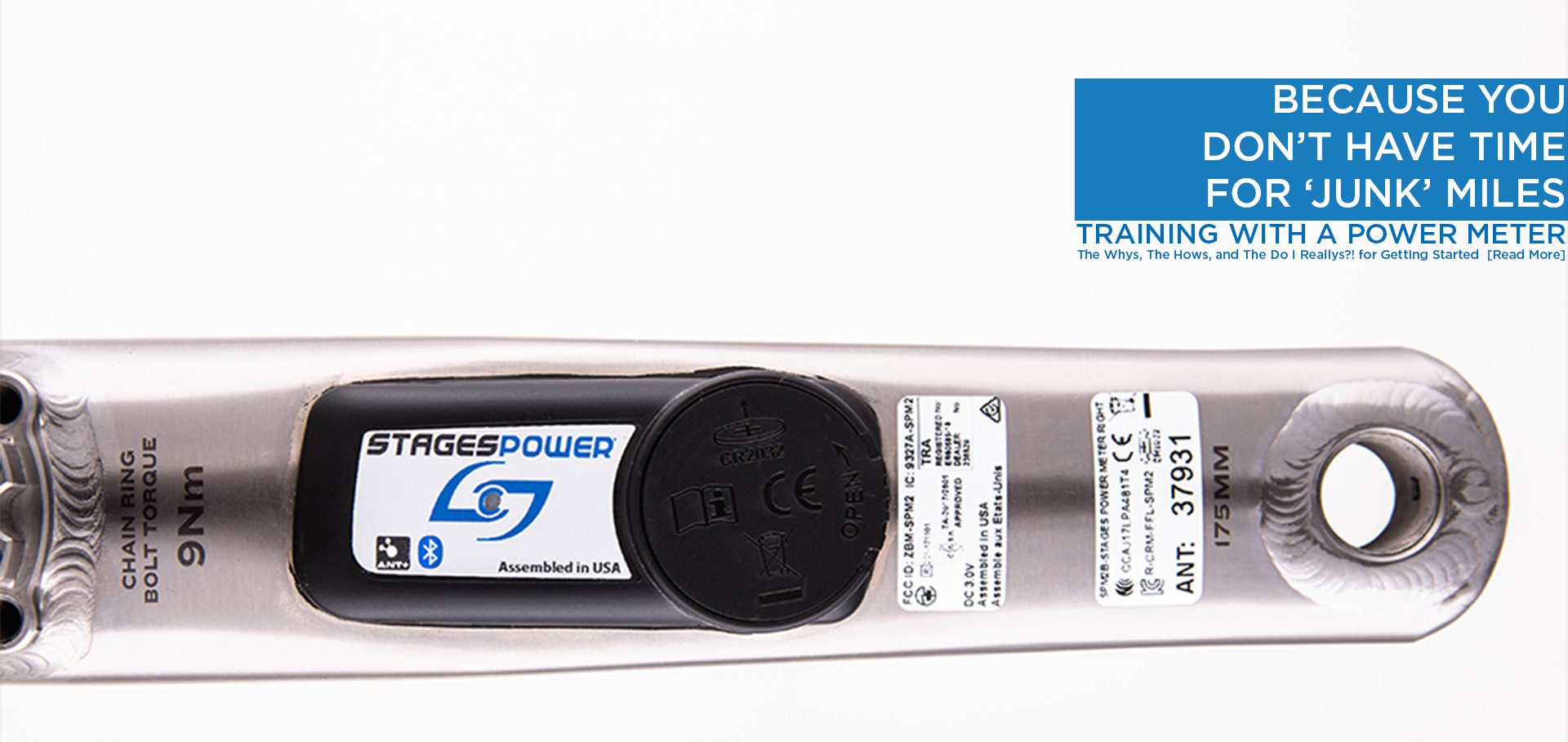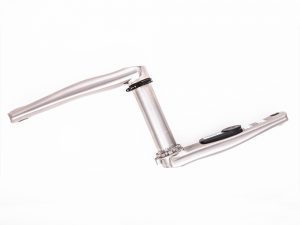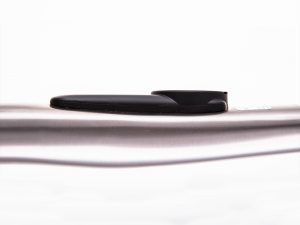Due to winter weather, our offices will close Friday 1/10 at 12pm EST
Limited Edition: eeBrakes Magnum


“I am a cyclist and ultra-runner. In the past, I was an Ironman triathlete and even did some track racing. I am currently training for Leadman in beautiful Leadville, Colorado. Leadman is a 5-race event that includes a trail marathon, 50-mile mountain bike race, a 100-mile mountain bike race (the Leadville Trail 100), a 10k run, and a 100-mile run (also the Leadville Trail 100). All of these events take place within a 9-week span and at an altitude of 10,000′ and higher.”
We recently sat down with TR to discuss his training, why he chooses to train with Stages power meter, and whether or not training with power works well for both endurance athletes and for “Joe/Jane Shmoe” (aka the rest of us).
 TR: I train with a Stages Power meter on Cane Creek eeWings cranks. With over a year of power-based training I have seen how it has changed my approach to cycling and how it has bled over into my running fitness.
TR: I train with a Stages Power meter on Cane Creek eeWings cranks. With over a year of power-based training I have seen how it has changed my approach to cycling and how it has bled over into my running fitness.
Training for two 100-mile events simultaneously is tricky – especially when they are from two different disciplines (bike & run). I need to teach my body to absorb a lot of workout volume to be able to ride and run silly long distances back to back. This means I am in constant danger of over-training and injury. By working with a coach and a power meter, we can make sure I am working hard enough – AND SMART ENOUGH – on the bike to promote fitness advances while not destroying my legs for the run training. It’s a delicate balance.
TR: While the idea of being fed a lot of data can be overwhelming (it was for me at first) it’s a great tool. I work full-time and my training can be a 15-20 hour a week part-time job. I don’t have time to waste on junk miles. My training needs to be specific and with a result. The Stages Power meter keeps me on the path during interval or steady state workouts. I can see the difference in the power numbers and know I am on the right training plan. Before, without a power meter, I was left to rely on heart-rate (HR) and speed. The problem with HR is that, if I am tired, my HR can sit a little higher than usual. If I had a huge coffee before the ride, it can tick up a bit. Just being in a nervous pack of riders can lift my HR, [so it can paint an inaccurate picture]. Likewise, speed is a crazy number to solely rely on for training. One day’s tailwind can be tomorrow’s headwind.
TR: My coach puts me in pretty specific power parameters. It allows me a nice warm up, then I get to work for a couple hours and then cool down. All of this is controlled by watts. My favorite climb is up Highway 64 to the Continental Divide. Earlier in the year I held an average of 250 watts up the climb. Recently I held 284 watts up the same climb. The difference in the two efforts is my targeted training and the 5-pounds I lost, both of which really help when the road points up.
Another feature I pay attention to is the average watts on the two weekly Cane Creek lunch rides. These rides can get really rowdy. Having the Stages Power meter lets me know how much effort I’m adding to the group. I also use the wattage number to not blow my engine. I know what wattage I can lay out and not blow up. As the year progresses I can also figure out how many watts it takes to drop certain friends in the pack.
 TR: What I like about Stages is that it’s a discrete, crank-based meter, and you have the option to go with only one sensor on one crank arm. This saves weight and money while painting a clear picture of your power. While there are plenty of long technical books that will easily put you to sleep, I suggest a basic – crude – approach to start. Go out on a ride and find a mile long hill that’s not too steep (4-5% grade), but enough to get your heart pumping. Ride up the incline at a pace that you think you can hold for 5-minutes. If you can’t catch your breath and you’re rocking your shoulders you are going too hard. The goal is to make this a strong steady effort. Hit the “lap” button at the bottom and again at the top. Keep this data and see how your wattage improves from week to week.
TR: What I like about Stages is that it’s a discrete, crank-based meter, and you have the option to go with only one sensor on one crank arm. This saves weight and money while painting a clear picture of your power. While there are plenty of long technical books that will easily put you to sleep, I suggest a basic – crude – approach to start. Go out on a ride and find a mile long hill that’s not too steep (4-5% grade), but enough to get your heart pumping. Ride up the incline at a pace that you think you can hold for 5-minutes. If you can’t catch your breath and you’re rocking your shoulders you are going too hard. The goal is to make this a strong steady effort. Hit the “lap” button at the bottom and again at the top. Keep this data and see how your wattage improves from week to week.
On group rides or training rides you will start to see patterns like being able to hold 180 watts for most of the ride or soon learn that you tire out your legs/lungs trying to hold 290 watts for more than 30-seconds. You really learn you. As you progress, you can start pairing your heart rate and watts and really get into the details of your human engine.
TR: Once I put a Stages Power meter on one bike and realized what it did for me, I put Stages power meters on two more bikes. Yes, there is a cost to having this awesome technology. Cycling is evolving and the riders are evolving with the sport. Back in the 90’s I was installing small wireless (non-GPS) computers on bikes. Those were about $29 to get speed/average speed/time and distance. Today, most riders won’t ride without a $250 GPS device and usually carry an $800 phone too!
TR: Cycling makes my life better so I am happy to invest in my equipment. I’ve been in the cycling game for 25-years. In that time I would say the biggest game changers have been power meters, disc brakes and dropper posts. A power meter will really be beneficial if you are tracking your fitness. It’s an investment in your well-being. That’s always money well spent.
Monday: 10:00 am – 5:00 pm
Tuesday – Thursday: 10:00 am – 5:00 pm
Friday: 10:00 am – 5:00 pm
Saturday – Sunday: Closed